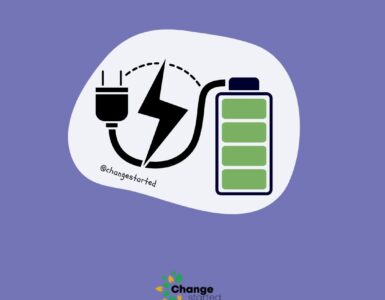Greenhouse gas emissions (GHG) are widely recognised as a significant contributor to global warming and its harmful effects worldwide. To establish the price of these emissions, the concept of carbon credits and carbon markets was put in place.
Carbon markets reward entities that reduce emissions over time and create financial disincentives for those that emit more than their share. These are specialised financial markets through which carbon credits can be bought and sold, allowing the purchaser to emit a certain amount of carbon dioxide or other greenhouse gases.

The trading is often called carbon trading or carbon emissions trading, regulated and controlled by governments or international bodies. Depending on the kind of industry and jurisdiction, participation in the carbon markets is mandatory or voluntary.
The entities participating in the carbon markets include countries, large industrial plants, businesses, small organisations, and individuals. The overall idea is to reduce carbon emissions and encourage companies to strive towards building a better future.
Carbon Markets
While there is no global marketplace for carbon trading, regional jurisdictions have made their markets for carbon credits. The carbon markets ensure the efficient processing of transactions between different parties across industries and regions.
There are two types of carbon markets—compliance and voluntary.
Compliance markets are established by governments or multi-government bodies that control the supply of credits and regulate their trading. On the other hand, voluntary markets are those in which carbon credits may be traded voluntarily.
The European Union’s EU Emission Trading System (EU ETS), launched in 2005, is recognised as the first carbon market and claims to be the world’s largest. The EU market is considered the benchmark for carbon trading, it covers all European nations, including Iceland, Liechtenstein, and Norway, and regulates emissions involving thousands of facilities.
The carbon trading is generally based on the cap-and-trade regulations which limit how much greenhouse gas entities can emit and allow them to purchase more emissions from entities that haven’t reached their limit.
Cap and trade has become one of the most widely used emissions reduction tools worldwide. Towards the end of the 20th century, the United States was able to reduce sulfur dioxide emissions by following a cap and trade program.
Benefits of Carbon Credits
To understand the benefits of carbon credits, let us look at them from the perspective of buyers and sellers.
Why Companies Sell Carbon Credits
In a 2023 Impact report, US-based EV manufacturer Tesla revealed that the company “generated almost $1.8 billion in revenue selling zero-emission regulatory credits to other OEMs.” Tesla is a prime example that has capitalised on the growing demand for carbon credits. The revenue generated from the sale of carbon credits is a substantial source of income for the EV giant.
Tesla’s financial gains from carbon credits underscore the paradigm shift towards reducing carbon emissions, which can be emulated by other companies.
Moreover, selling carbon credits is not a prerogative for only an EV company, other small businesses and even landowners can participate in the carbon credit trade if they are working on projects like tree plantation, or other carbon removal initiatives
The funds generated by selling carbon credits can be used to further expand their business and pay for their operations.
Why Companies Buy Carbon Credits
Emission reductions are possible through changes in business practices for some companies, but a complete removal of emissions is not feasible for many firms, given the current state of technology.
However, given the urgency of addressing climate change, companies in certain industries face growing public and regulatory pressure to achieve net-zero commitments. By buying carbon credits, these companies can legally offset their GHG and allow them to have a “net-zero carbon emission” rate.
Apart from buying carbon credits, emitting companies can participate in several other projects that offset carbon emissions.
One of the foremost is investing in renewable energy sources like wind, geothermal, solar, and hydropower. Additionally, improving energy efficiency across the value chain and participating in initiatives that provide efficient operations are considered valuable.
Other practices include participating in carbon-neutral fuel sources by capturing and processing carbon, undertaking projects to return biomass to the soil, promoting forest conservation through tree-planting and reforestation projects, and switching to alternate fuel types like low-carbon biofuels or biomass-derived ethanol and biodiesel.
Wrapping Up
While carbon markets play an instrumental role in mitigating climate change, the markets are not without criticism from environmentalists, investors, and industry watchers.
Carbon markets have been criticised for overrepresenting the amount of carbon reduction the entities are causing. A 2023 report from the World Economic Forum identified that environmental claims by many companies are ‘exaggerated, or deceptive’.
Therefore, it is absolutely necessary to establish a trustworthy representation of environmental benefits – ensuring proper monitoring and reporting as well as addressing manipulation or any other greenwashing methods in the carbon markets.
Despite the problems, as companies embrace responsible practices and progress towards achieving net-zero emission targets, the carbon market is poised for rapid growth in the coming years.






Add comment